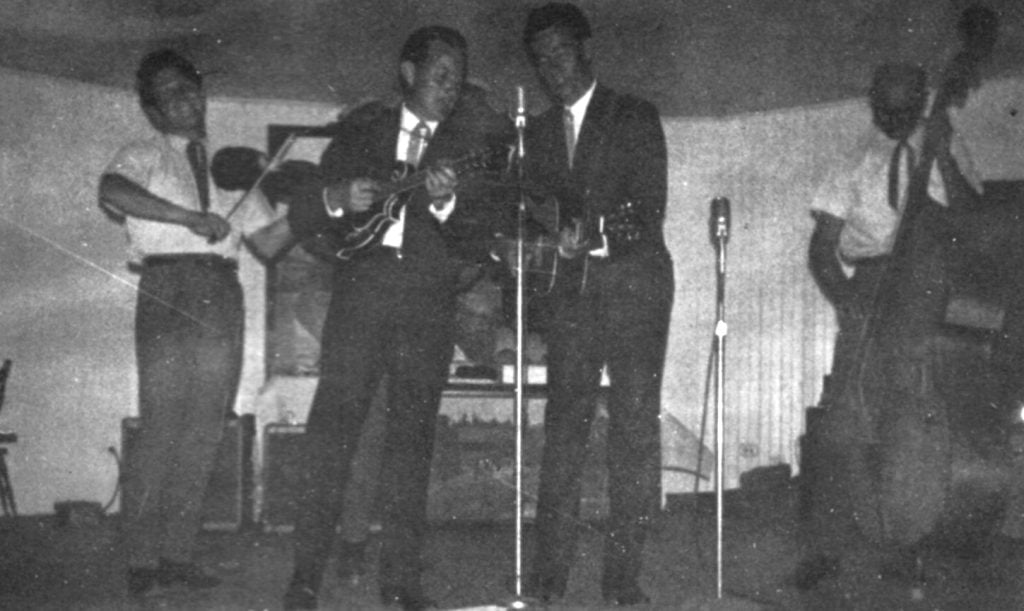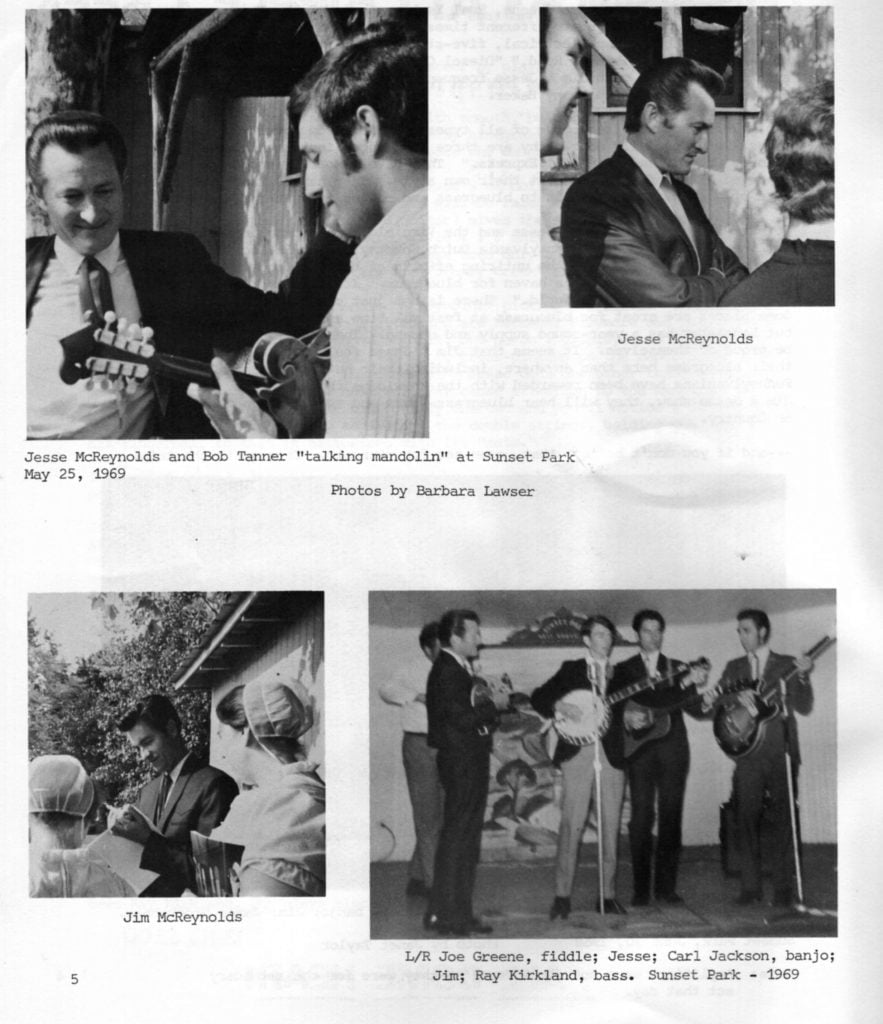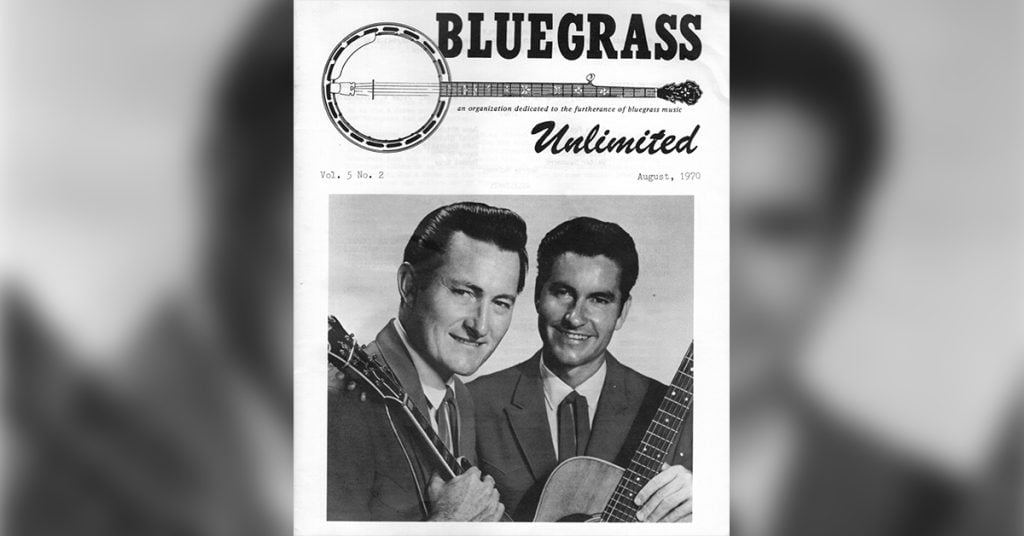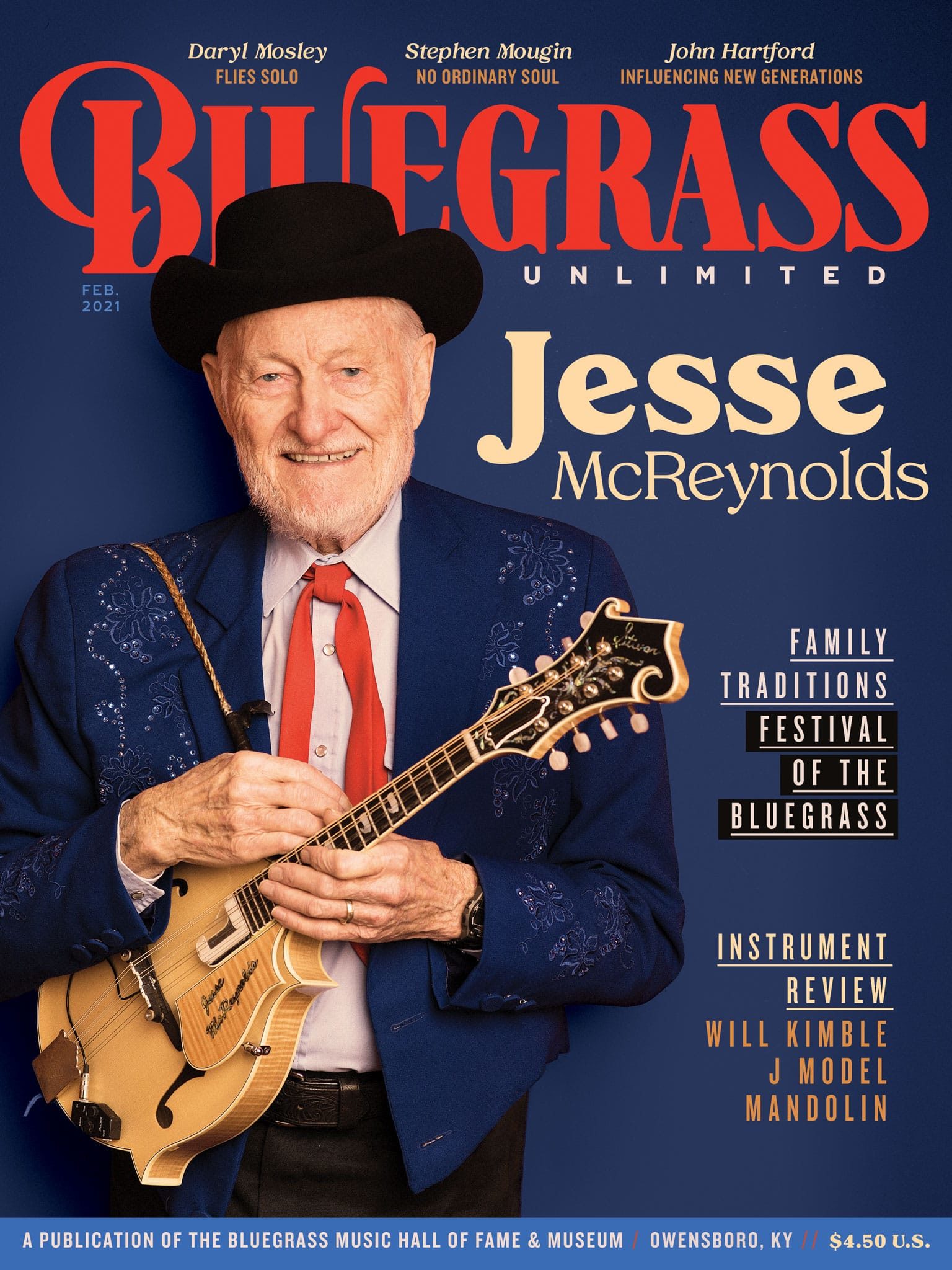Home > Articles > The Archives > The Better half of Jim and Jesse & Va. Boys
The Better half of Jim and Jesse & Va. Boys
Reprinted from Bluegrass Unlimited Magazine
August 1970, Volume 5, Number 2
For the last few years Jim & Jesse have been perched precariously between the two kinds of music which, for some reason, seem to have the bitterest resentments toward each other. “Jim & Jesse have gone country” is the angry cry—”tune ‘em out!” So as Jim & Jesse put out one C/W album after another, they are being shunned by one bluegrass fan after another.
The beginning of the end came about as “Diesel On My Tail” on Epic label made tremendous selling points by becoming the most successful record Jim & Jesse had ever cut. This was fortunate for Epic promoters and for Jim & Jesse; but for the bluegrass fans who loved and supported them, (but who obviously were not buying bluegrass albums in as great a quantity as was necessary) it effected quite a loss. As a result, Jim & Jesse and the Virginia Boys have in some circles been pushed into a corner and written off as “Country.”
To anyone who hasn’t listened to Jim & Jesse since they started making Country records: well, if you haven’t tried it, don’t knock it. Their bluegrass is unsurpassable; and they work every bit as hard when playing Country. The McReynolds boys have never been accused of laziness on the stage; and while most Country musicians play electrical instruments because they’re easy, (as well as loud) Jim & Jesse work to make it sound impressive to even a bluegrass enthusiast.
But that’s the Nashville scene and not really what Jim & Jesse are all about.
They come from Coeburn, Virginia, a small, attractive, mountain town somewhere between Marion and Big Stone Gap. It’s growing now, like most other towns are these days. But several years back when things were simpler, including music, there must have been little the young people could do for entertainment; and quite often, especially in a musically-inclined family, young men learned the fine art of bluegrass. Their grandfather was noted as one of the greatest fiddlers in Southwest Virginia. It’s only natural that music would play an important part of their lives. They got together at an early age to pick and sing for their friends and neighbors; and their talent for harmonizing was hard to keep quiet.

In 1947 they won a talent contest which landed them their first job entertaining at WNVA, Norton, Virginia. From then through 1952 they played at a variety of radio stations, including WTHG, Bristol, Virginia; KFBI, Wichita, Kansas, and WVLK, Versailles, Kentucky. Later on they appeared at WNOX, Knoxville and WWVA, Wheeling, West Virginia, not to mention a number of others located in Georgia and Florida. In 1964 they became members of the Grand Ole Opry—the ultimate goal of most artists. They now make their home in Gallatin, Tennessee, near Nashville.
Jim McReynolds has a strong, clear, tenor voice which would be an asset to any type of music. Fortunately for bluegrass, he was brought up in the right part of the world in the right time period. His tenor solos are always in great demand; and the harmony he sings is tastefully simple, but impressive. Primarily, his instrument is his Martin D-28 guitar; although he’s been known to say he taught his little brother everything he knows on the mandolin … well …
Jim’s “little brother”, of course, is Jesse McReynolds, who sings lead. The mandolin is Jesse’s instrument, as everyone well knows, but he can play almost anything he picks up, including the fiddle and guitar.
There are three things which set Jim & Jesse apart from most other successful blue- grass groups:
First of all, they did not start their career by playing with Bill Monroe’s Bluegras Boys, or with any other established group, for that matter.
Secondly, their choice of songs, along with smooth, beautiful harmony is unlike that of any other group. You could say they play bluegrass that appeals not only to people who like bluegrass, but even to those who do not.
Third, and probably most important, is Jesse’s mandolin picking; and an entire book should be devoted to that, but this will be relatively brief. The crosspicking he does on the mandolin (and guitar) gives the sensation of the driving, syncopated three-finger banjo-picking style . . . only finger picks can’t be used on a mandolin, (just try it once) and Jesse uses only one flat, hard pick. Two classic cross-picking instrumentals are “Stoney Creek” and “Dill Pickle Rag.”
The number of people who can handle “McReynolds’ picking” is small. In fact, the only two who have come to Jesse’s attention are Herschel Sizemore and Bob Tanner. Some have hinted at it and touched onto it, but haven’t displayed an entire break, let alone an entire instrumental. In fact, cross-picking on the mandolin is like playing an entirely different instrument. Jesse does one other thing on the mandolin that few people have noticed. Pay close attention to the mandolin in “Grave In The Valley” and “The Old Country Church” and you’ll notice a twin-mandolin type effect. This he does by separating the double strings, holding one down with his fingernail so that it harmonizes with its “mate.”
The period around 1963-1965 is considered by many to be Jim & Jesse’s bluegrass peak. At that time the band consisted of the following:
Jimmy Buchanan, the fiddle player, who still plays occasionally with the group.
At present he plays for a number of groups around Nashville and on the Grand Ole Opry.
James Earl Brock, who played fiddle and bass.
Don McHan played bass and guitar and also did some singing. He’s written two songs recorded on albums by Jim & Jesse, “Grave In The Valley,” and “I’ll Wear The Banner.” He rejoins the group on tours from time to time, also.
Allen Shelton was the banjo player who won respect from bluegrass fans on numerous record albums. Although he is no longer active in professional bluegrass, from time to time he does take part in a bluegrass festival. Obviously, you can take a man out of bluegrass, but …
At present, and due mostly to the fact that they seldom require a full bluegrass band, they rotate banjo and fiddle players frequently. The quality is always high, though, as Jim & Jesse are exacting taskmasters, when it comes to music.

Carl Jackson is probably their youngest and one of their more current banjo players. Whenever he isn’t going to school at home in Mississippi, he goes out on the road with the Virginia Boys. Al Osteen, from South Carolina, also plays banjo with them on tours. About the most consistently-attending member of the group on tours has been Ray Kirkland, who plays electric bass and sings country-style songs.
Such respected names as Joe Greene, Rual Yarbrough, and Bobby Thompson have also joined the Virginia Boys at different times. Bobby Thompson has recently played the weird-sounding, non-electrical, five-string dobro featured on some of the newer releases, such as “Blunder Road,” “Diesel On My Tail,” and “Banderilla.” Joe Greene still plays fiddle with Jim & Jesse frequently and also has two albums out on his own, including one with Kenny Baker.
Jim & Jesse have written songs of all types, ranging from novelty songs to love songs; but especially noteworthy are three fast-paced instrumentals: “Border Ride,”
“Stoney Creek,” and “Fireball Express.” They have also rearranged and definitely improved a lot of songs to suit their own style. They have a knack for taking any kind of a song and putting it to bluegrass and making it quite palatable.
Several times a year, Jim & Jesse and the Virginia Boys appear in a small section of Pennsylvania known as Pennsylvania Dutch Country, which is located mainly around Lancaster. Largely due to the untiring efforts of Bobby Montgomery and Harold Burkhart, this area has become a haven for bluegrass. It could even be called the “Bluegrass Capital Of The World.” There is not just one season for bluegrass there. Some places are great for bluegrass at festival time and during the summer months; but Lancaster has a year-round supply and demand. The people of this area should be proud of themselves. It seems that Jim & Jesse feel more welcome when playing their bluegrass here than anywhere, including their native Virginia. And for this, Pennsylvanians have been rewarded with the knowledge that when they go to see a Jim & Jesse show, they will hear bluegrass—pure and sweet—and not electra-grass or Country.
—and if you don’t believe that, come see for yourself. It’s worth the trip!

